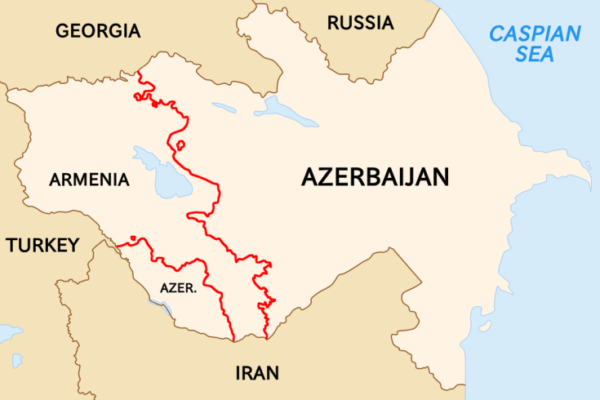This week marked a pivotal moment in global geopolitics as the European embargo and G7 price cap on Russian oil came into effect. Within hours, supply disruptions were visible as tankers lined up in the Bosphorus Strait.
All of this would normally send oil prices soaring, especially just weeks after the Opec+ cartel surprised the market by announcing deep new supply cuts. Still, international benchmark Brent crude settled at $76.15 a barrel on Thursday, a new low for 2022. What’s going on?
Russian supplies remain strong
Europe’s ban on oil imports from Russia, the world’s largest oil exporter, is a de facto sanction aimed at forcing Moscow to redirect supplies and stop the ugly specter of allies from war-torn Ukraine sending petrodollars to President Vladimir Putin.
When the EU announced it would impose sanctions on any tanker carrying Russian oil, even one bound for Asia, there were fears in some Western capitals that the measures would Western politicians would take a hit from higher inflation.
But the price ceiling intends to keep Russian oil directed to customers and not to shoot up its costs. Other measures associated with the price cap were also reduced, giving traders some confidence that flows would continue largely unfettered.
The US persuaded the EU, for example, to drop one clause in its sanctions that would have banned vessels forever from receiving European maritime services if they breached the price cap.
The ceiling, set at $60 per barrel, was designed “to ensure that price spikes are not used to split the alliance and weaken the ability to support Ukraine [and] to ensure that it is not possible to raise revenue for an aggressor to pay for continued aggression,” said Amos Hochstein, chief energy adviser to US President Joe Biden.
Russia has refused to negotiate with any buyer that wants to use the cap, but Western officials say the $60 level still helps Asian refiners negotiate lower prices
Opec+ deep cuts are not that deep
In October, when Saudi Arabia, Russia, and other OPEC+ allies announced a cut in production quotas by 2 million barrels a day – equivalent to about 2 percent of global. Riyadh has sided with Russia in a global energy war, the White House has suggested. The International Energy Agency accused the group of threatening the world economy.
But while energy-led inflation is still a problem in Western economies, the past five weeks suggest that the Opec+ group’s move has been a relatively smart one.
Oil prices did not rise but slipped, fueling Saudi Energy Minister Prince Abdulaziz bin Salman’s argument that preemptive cuts were needed in the face of a weakening global economy to stem the market’s sharp decline. Opec+ maintained production targets after meeting them last week.
The actual cuts by Opec+ were also less than the headline figure announced in Vienna, partly because some producers such as Angola and Nigeria were already struggling with their quotas. Instead of 2 million b/d removed from the market, the total is closer to 1 million b/d, analysts say — still substantial, but not enough to flush out oil bears.
Concerns about demand outweigh supply
After months of agonizing over supply disruptions, traders are now focused on fears of a global recession as the fallout from Russia’s invasion of Ukraine and the EU’s energy war spreads and central banks race to raise interest rates to tame runaway inflation.
Wall Street banks have issued cautious economic outlooks for 2023.
The bearish sentiment is visible in the oil market’s transition from backwardation – a market structure in which spot prices are higher than the price of contracts for oil delivery.
This reversal suggests that traders perceive the market to be overstocked, and the move is sometimes seen as an indicator of expectations of an impending economic slowdown.
Major oil market concerns center on China and the US, the world’s two biggest energy consumers. China’s zero-Covid policy and weakening economy mean its total oil consumption will be lower this year than in 2021, according to the IEA, the first annual decline this century.
While the US economy may have escaped recession, its consumers’ thirst for gasoline also appears to have peaked. Consumption at this time of the year has been this low only once in the last two decades – in 2020, affected by the coronavirus pandemic. Total oil demand in the US has yet to catch up to the pre-Covid era.
But prices could still come back
Oil bears think all of this points to a cyclical decline in oil prices that continues. But the bulls are confused. He argues that years of underinvestment in supply will eventually catch up with the market if demand continues to rise, even modestly. Another risk is slow production growth in the US shale oil field. Any drop in Russian supplies may not be visible until next year, some analysts say.
“We’re going to see a lot more Chinese energy demand.”
Meanwhile, the government is ending months of selling oil from its emergency stockpile and plans to begin replenishing supplies in the U.S.
“On the margin, a seller of 200 million barrels in 2022 would become one of the biggest buyers of oil in 2023,” said Bill Smead, chairman of Smead Capital Management, referring to the volume of oil released this year.









